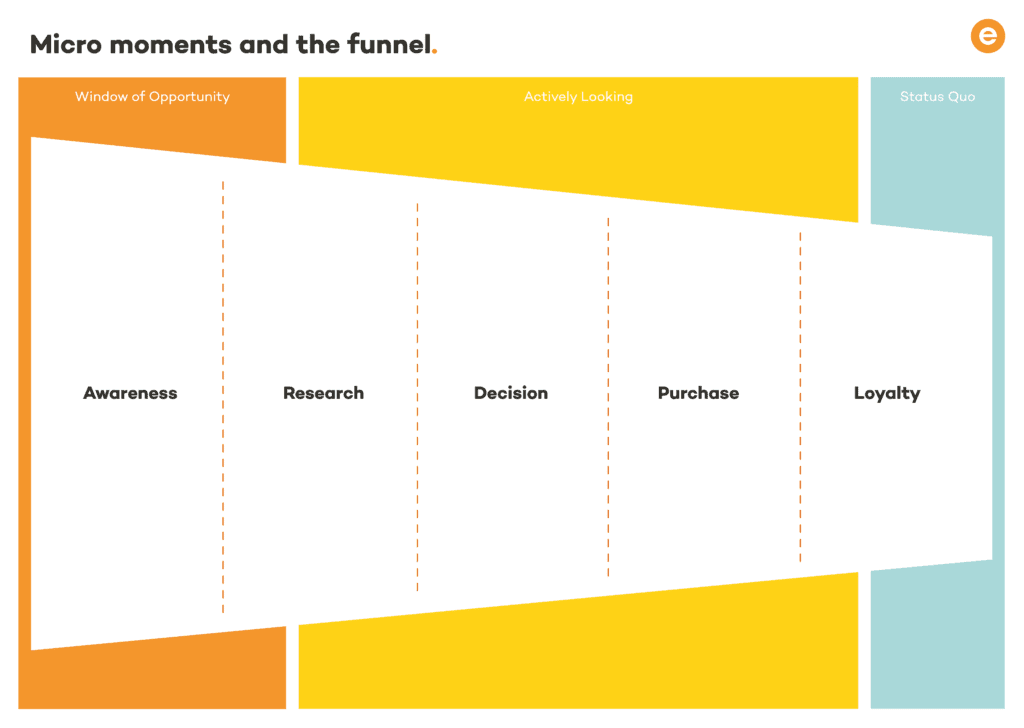As part of our build-up to next week’s Paid & Biddable Leaders Masterclass in Leeds, Epiphany’s Arianne Donoghue examines the area of campaign tracking, and how marketers can use cross-channel data to maximise their results.
One of the biggest challenges in marketing in recent years has been around tracking the value and efficacy of our campaigns. I believe that our focus on last-click conversions could be significantly damaging our marketing, but not in the way you think. This isn’t about attribution, after all.
As someone who’s worked in paid media for over a decade, I know that one of its biggest attractions is measurability – the way we know exactly what return we generate and can optimise to further increase it. However, one of the biggest flaws is the focus on last-click – which we know can lead to more of a focus on bottom-of-the-funnel activity, rather than looking at the top of the funnel and the initial interactions that customers make. We see this at a basic level in the performance of brand vs non-brand keywords and the sometimes poorly perceived value of Display campaigns.
While last-click and attribution are definitely part of the problem here, I’d like to suggest that our quest for ROI can also make things worse in some instances. Let me explain.
The Wrong KPIs
Let’s say that you’re running a Display Prospecting campaign. That sits pretty squarely in the top of the marketing funnel – most likely in the Awareness/Research stages.
Ultimately, what is the goal of a prospecting campaign? Eventually, we want it to drive sales/revenue, but this can take a long time – sometimes well beyond the scope of a regular 30 or 90-day cookie window. This is complicated further by the need for robust impression tracking in Analytics to understand when a sale has been driven.
However, if we really think about it, the goal of the campaign, particularly in the short to medium-term, is to find new users who are unfamiliar with your brand and bring them to the website for the very first time. Once this is done, you could argue that prospecting has done its job and it’s now over to Retargeting and Paid Search to get that user to the point of conversion. Yet, rather than assess this campaign’s success on how many new visitors it drove, we use the KPI of our end-goal conversion.
Not Enough Conversions
Another instance where the approach can cause problems is in optimising Paid Search campaigns. Often, marketers may be trying to optimise their paid search campaigns without enough conversion data to make reliable bidding decisions.
This issue is more prevalent with non-brand keywords, which are less likely to drive last-click sales anyway. It doesn’t mean the keywords are adding no value – in fact, we know that if we paused these terms, we’d probably be losing conversions further down the line.
The Solution
How do we fix this? I believe the solution is to have a greater focus on micro conversions when it’s appropriate to do so.
What are micro conversions?
“Micro conversions are activities that users frequently engage in before purchasing. Sites commonly have several kinds of micro conversions, e.g. email sign-up, created account, PDF download, extensive site browsing”
https://support.google.com/analytics/answer/2665210?hl=en
The value of micro conversions is also something Avinash Kaushik wrote about extensively almost ten years ago – I highly recommend reading this blog post he wrote on the subject.
Avinash believes, as do I, that looking at micro conversions in addition to macro ones allows us to better understand the behaviour of the distinct personas who use your site; it forces you to look at more of the multi-channel picture. When we ignore them, we’re saying that we don’t value the users who spend significant time on our websites, or those who signed up to receive emails, or even those who went to the trouble of creating an account. Just because they’re not ready to buy right now, it doesn’t mean they never will and we should look after and value these users.
Of course, with some of our marketing efforts we can create remarketing lists that specifically target these users to help bring them to the point of finally converting. But the credit for those macro conversions would go to the later activity – as it arguably should do, as the job of those channels is to drive conversion. But we would still be undervaluing the activity that drove the micro conversions because we just don’t value them as highly.
Attribution
I know I said this post wasn’t about attribution and it’s not – mostly. Thankfully the increased use of attribution and data-driven models, in particular, is helping to address this issue. Data-driven attribution looks at all of the micro conversions and assigns macro conversion value based on the part that every interaction played across the whole journey.
Still a challenge, however, is the fact that few businesses are set up to use data-driven attribution to help shape their use of channels and budgets. Analytics and Attribution solutions that offer impression tracking can be expensive and not all solutions offer a data-driven model to work with. What can you do if that’s the case?
Firstly, ensure you have goals set up to track your micro conversions and assign a value to these. Report on them as well as your macro conversions and consider using traffic and brand awareness increase as KPIs for certain types of Display and other upper-funnel activities. In the vast majority of businesses, most customers won’t convert on their very first interaction with a new brand – so our measurement and reporting should reflect that.
With more and more businesses understanding the need to look at the whole customer journey, I believe this approach enables us to better judge the success of our marketing campaigns, and the impact they have, at the right point of the customer journey in the right way.
*Feature image source: digitalmarketinginstitute.com
Author Biog:
Having started off her digital career client side over a decade ago, Arianne has worked for both agencies and brands in-house, specialising in search. She is now back agency side supporting on biddable media digital strategy. A regular on the conference scene, she’s also an editor and contributor at popular site State of Digital.
Arianne Donoghue is the Paid Media Development Manager at Epiphany, and will be leading a session on ‘Using Cross Channel Data to Help Your Campaigns Work Harder’ at next week’s Paid & Biddable Leaders Masterclass in Leeds.


